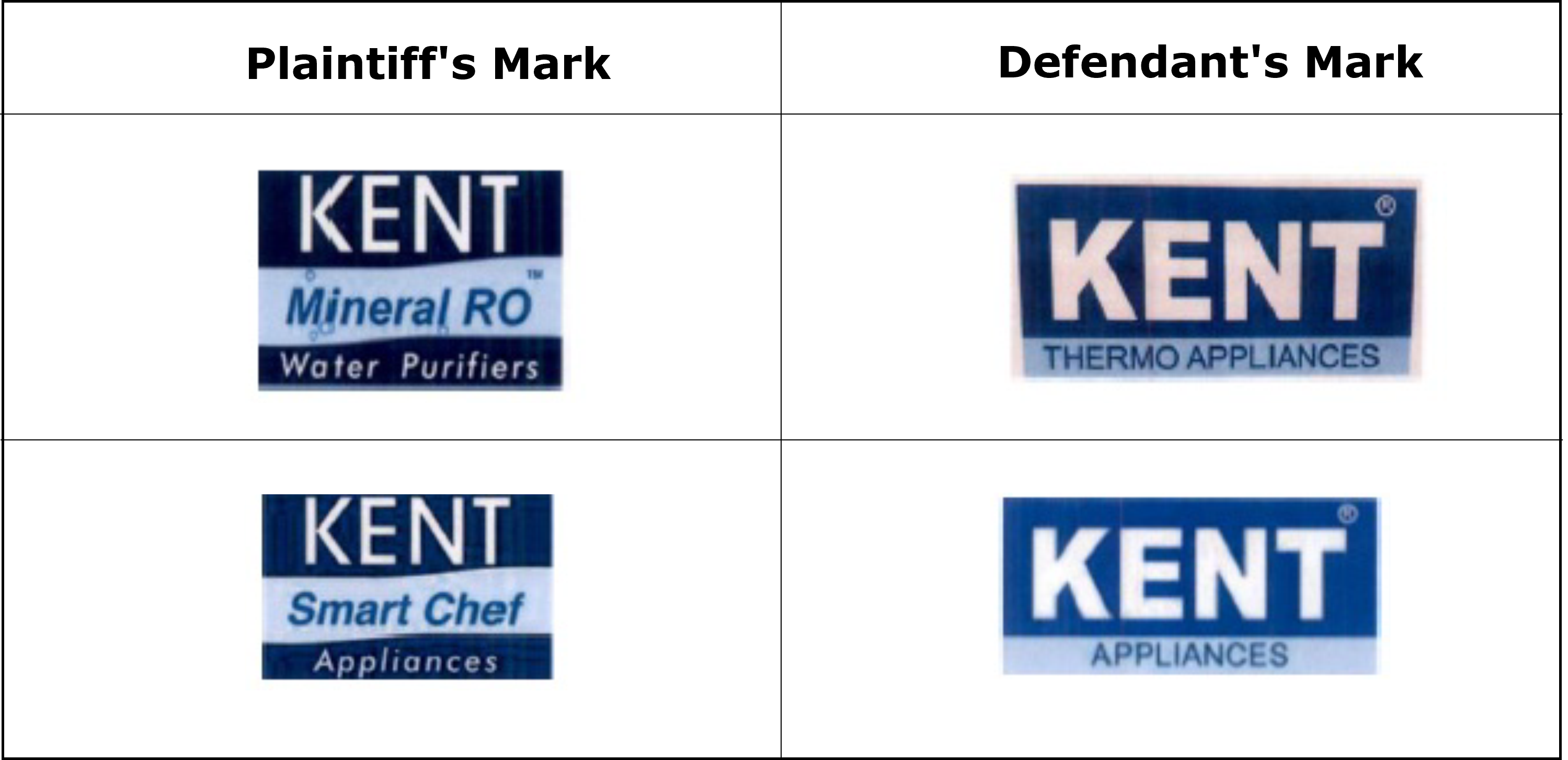Delhi High Court vacates injunction for suppressing material facts
This order passed by the Delhi High Court emphasizes the perils of suppressing material facts when seeking an interim injunction. Plaintiff, Kent RO System Ltd, and Ors filed the suit against the Defendants, Gattubhai and Ors, alleging trademark infringement, passing off, etc., and restraining the latter from using the mark ‘KENT’ concerning their business. The Defendants have applied to set aside the ex-parte injunction granted earlier, which the Court is considering.
The plaintiff in the suits contends:
- They adopted the mark ‘KENT’ in the year 1988 in respect of products relating to petroleum conservation and in 1999 started using the same for water purifier systems.
- Over the years, they diversified into other products such as grinders, blenders, and other kitchen appliances sold under ‘KENT.’
- They have a trademark and copyright registration for the mark KENT //, which has been adjudged as a well-known mark.
- In and around March 2019, they came to know of the Defendants selling products such as thermo flasks
 and other home appliances
and other home appliances  under the identical mark ‘KENT’ and using the same color scheme of blue and white.
under the identical mark ‘KENT’ and using the same color scheme of blue and white. - Defendants have registrations in respect of the word mark ‘KENT’ in Class 7 and Class 21 since the year 2004, and they have filed oppositions against the Plaintiff’s applications in Classes 7 and 21.
- The registration of ‘KENT’ is of no consequence unless the Defendants can establish prior use. The goods are allied and cognate to confuse, which amounts to infringement and passing off.
Defendants oppose the injunction application on the following:
- The Plaintiffs are guilty of suppressing material facts by not disclosing the draft Trademark Co-Existence Agreement shared with the Defendants in 2012. In the said Agreement, Plaintiffs acknowledged Defendants’ business in domestic utensils and containers, electrical and non-electrical home appliances, and Defendants’ registrations of the mark KENT in classes 7 and 21 since 2004. In the plaint, it falsely claimed first knowledge of the Defendants’ products in March 2019.
- The Plaintiffs’ stance in the draft Agreement was no confusion between the marks as they were used concerning different products. Thus, the Plaintiffs cannot approbate and reprobate and are now estopped from taking a separate stand before the Court.
- The Plaintiffs expressed their intention to settle the matter with the Defendants through correspondence in May 2014.
- The Plaintiffs have filed no rectification application against the Defendants’ registrations. As Defendants have registration for the KENT mark in classes 7 and 21, no infringement action will lie.
- The Defendants have been using the subject mark since 1996 and have filed documents showing use since 2004 and thus, concurrent users of the mark. The Plaintiffs decided to launch kitchen appliances under the mark KENT only in 2018, which is deliberately not disclosed in the plaint.
Court’s findings
- On perusal of the parties’ communications in 2012 and 2014, it is evident that the Plaintiffs were aware of the Defendants’ registration and use of the mark KENT regarding its goods above at least since 2012. The Plaintiffs have also admitted to using the mark KENT in respect of water and air purifier systems and other healthcare products alone and not in respect of kitchen appliances.
- Further, in the Draft Agreement, the Plaintiffs have proposed to limit their use of the subject mark to its specific description of goods evidencing its intention to acquiesce to Defendants’ concurrent use of the mark KENT and thus, estopped from claiming to the contrary.
- The non-disclosure of the communications above by the Plaintiffs in the plaint amounts to gross suppression of facts, which calls for the vacation of the injunction order as the Plaintiffs have not approached the Court with clean hands.
- Apart from the draft Agreement and past correspondences shared between the parties, which reflect the Plaintiffs’ intention to share the subject mark with the Defendants, the Plaintiffs have also not challenged the Defendants’ KENT registrations to date. Thus, further contributing to the conclusion of acquiescence at the Plaintiffs’ end.
- Documents on record show that Defendants have been using the mark KENT at least from 2004. Thus, under Section 29(1) of the Trademarks Act, no injunction can be granted regarding the user of a registered proprietor of a trademark.

- On comparing the rival marks, it is evident that the color scheme is identical. However, to establish a passing-off action, it must be determined which party has prior use in the said colour scheme. The Plaintiffs have filed documents to show the KENT color scheme use since 1999, while the Defendants have not filed any document to show prior use of the color scheme. Thus, a prima facie case of passing off is made out in favour of the Plaintiffs regarding the KENT colour scheme adopted by the Defendants.
The High Court vacated the injunction order restraining the Defendants from using the mark ‘KENT’ or ‘KENT APPLIANCES’ or its variants. However, it restrained the Defendants from using the colour scheme of white and blue or any similar colour scheme used by the Plaintiffs.



